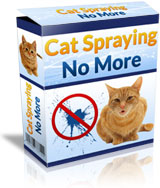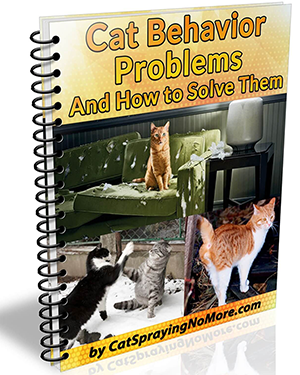Monthly Archives: June 2023
Understanding Feline Perception: Do Cats Know When You Take Care of Them?
As cat owners, we often find ourselves wondering if our feline companions truly appreciate the love and care we provide. Do cats recognize and acknowledge our efforts to take care of them? In this blog post, we will explore the fascinating world of feline perception and delve into scientific studies to understand whether cats can indeed sense and appreciate the care they receive from their human caregivers.
Do Cats Recognize Care?
While cats may not express gratitude in the same way as humans do, they possess a keen sense of observation and awareness. Cats have the ability to recognize patterns and associate actions with specific outcomes. When it comes to their caregivers, cats can pick up on behavioral cues, such as feeding schedules, grooming routines, and playtime, which they come to expect and anticipate.
Scientific Studies on Feline Perception:
Several scientific studies shed light on cats’ ability to recognize and appreciate care. A study conducted by researchers at the University of Tokyo found that cats can form secure attachments to their human caregivers similar to the bond seen in human-infant relationships. This study suggested that cats can differentiate between their owners and other individuals and display signs of separation distress when their owners leave.
Furthermore, a study published in the journal Animal Cognition revealed that cats can distinguish between different human emotions. The researchers presented cats with images of their owners displaying happy or angry expressions. The cats showed a clear preference for the images of their owners displaying positive emotions, indicating that they can recognize and respond to their owners’ emotional states.
Understanding Cat Communication:
To gauge whether cats recognize and appreciate care, it’s crucial to understand their unique modes of communication. Cats communicate through a combination of vocalizations, body language, and scent marking. While they may not express gratitude in the same way humans do, cats have their own subtle ways of showing affection and trust.
Cats often display physical signs of contentment and relaxation when they feel secure and cared for. They may purr, knead their paws, rub against their owners, or give gentle head butts—behaviors that indicate a bond of trust and comfort.
Suggested to get Cat Language Bible

Get Cat Language Bible
Also check out our post on cat’s sleeping position and tail tells.
Building a Strong Bond:
Taking care of your cat goes beyond meeting their basic needs. Spending quality time together, engaging in interactive play sessions, and providing mental stimulation are vital for fostering a strong bond. By investing time and effort in your cat’s well-being, you create a positive association with your presence and care.
In addition, providing a safe and comfortable environment, maintaining a consistent routine, and respecting their boundaries help build trust and a sense of security. Cats thrive on predictability and familiarity, and when their caregivers consistently meet their needs, they are more likely to feel valued and cared for.
Conclusion:
While cats may not express gratitude in the same way as humans, they possess the ability to recognize and appreciate the care they receive. Scientific studies indicate that cats form attachments to their human caregivers and can differentiate between emotions. Understanding cat communication and investing time in building a strong bond with your feline friend are essential for them to feel loved and cared for.
So, the next time you wonder if your cat knows when you take care of them, rest assured that they do. Your efforts to provide a safe and nurturing environment, meet their needs, and build a strong bond contribute to their overall well-being and happiness. Remember, the love and care you give to your cat are reciprocated through their subtle signs of affection and contentment.
The Ultimate Cat Care Checklist: A Guide to Happy and Healthy Feline Friends
Cats are adorable, independent, and mysterious creatures that bring joy and companionship into our lives. As a responsible cat owner, it’s essential to provide them with proper care and attention. Whether you’re a seasoned cat owner or considering adopting a new feline friend, this comprehensive cat care checklist will ensure that you’re well-prepared to meet your cat’s needs and keep them healthy and content.
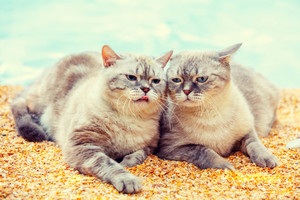
-
Provide a Safe and Comfortable Environment:
Create a cat-friendly space within your home by considering the following:
- Set up a cozy bed or a cat tree for them to relax and nap.
- Offer hiding places or cardboard boxes for them to retreat when they desire privacy.
- Ensure there are no hazardous objects or toxic plants within their reach.
- Install window screens to prevent accidental escapes or falls.
-
Balanced Diet and Hydration:
Proper nutrition is crucial for your cat’s overall health and well-being. Keep these tips in mind:
- Choose high-quality cat food that is appropriate for their age, breed, and any specific dietary requirements.
- Provide fresh water daily and consider using a pet fountain to encourage hydration.
- Consult your veterinarian for guidance on portion sizes and feeding schedules.
-
Regular Veterinary Care:
Maintaining a schedule of routine vet visits helps prevent and detect health issues early on:
- Schedule vaccinations, deworming, and flea/tick prevention treatments.
- Arrange annual check-ups and dental cleanings.
- Stay up-to-date with spaying/neutering and microchipping.
-
Enrichment and Playtime:
Cats need mental and physical stimulation to thrive. Consider the following activities:
- Provide interactive toys, scratching posts, and puzzle feeders to keep them engaged.
- Dedicate daily playtime sessions to keep them active and provide bonding opportunities.
- Rotate and introduce new toys to avoid boredom.
-
Grooming and Hygiene:
Maintaining proper hygiene contributes to a cat’s health and reduces shedding and hairballs:
- Regularly brush their coat to remove loose hair and prevent matting.
- Trim their nails to prevent overgrowth and provide scratching posts as an alternative.
- Clean their ears and teeth to prevent infections and dental issues.
-
Litter Box Essentials:
Creating a suitable litter box environment is essential for your cat’s comfort and cleanliness:
- Use unscented litter and provide a litter box for each cat in your household.
- Scoop the litter box daily and completely change the litter on a weekly basis.
- Place litter boxes in quiet and accessible locations.
-
Stress Reduction and Environmental Enrichment:
Cats are sensitive creatures, so creating a stress-free environment is crucial:
- Offer vertical spaces like cat trees or shelves for climbing and observing their surroundings.
- Provide hiding spots and secure perches to allow them to feel safe and in control.
- Use pheromone diffusers or calming aids if your cat experiences anxiety or stress.

Get Cat Language Bible
Conclusion:
Caring for your feline friend is a rewarding responsibility that requires attention, time, and love. By following this cat care checklist, you’ll ensure that your furry companion leads a healthy and happy life. Remember, each cat is unique, so observe their behavior and adapt your care routine accordingly. With your commitment and care, your cat will be your lifelong companion, bringing you endless joy and affection.
Frontline for Cats: Effective and Reliable Flea and Tick Protection
Introduction of Frontline for Cats:
As cat owners, one of our primary concerns is protecting our feline companions from pesky fleas and ticks. These parasites not only cause discomfort and irritation but can also transmit diseases. Frontline for Cats is a popular and trusted brand that offers a range of products designed to effectively eliminate fleas and ticks. In this review, we will delve into the features, performance, and overall efficacy of Frontline for Cats.
Application and Convenience:
Frontline for Cats is available in a topical solution form, making it easy to apply to your cat’s skin. The packaging includes individual pipettes that contain the appropriate dose for your cat’s weight. Applying the product is a straightforward process: simply part the fur on the back of your cat’s neck and squeeze the solution onto the skin. It is recommended to avoid bathing your cat for a few days after application to ensure maximum effectiveness. The convenience of the application process makes Frontline a practical choice for cat owners.
Flea and Tick Elimination:
Frontline for Cats is highly effective in eliminating fleas and ticks, providing relief to both cats and their owners. The active ingredient in Frontline, fipronil, targets and kills adult fleas and ticks on contact. It also disrupts the life cycle of fleas by preventing the development of flea eggs and larvae. Within 24 hours of application, fleas and ticks start to die off, significantly reducing the population and preventing reinfestation. This product offers long-lasting protection for up to a month, ensuring that your cat remains free from these parasites.
Safety and Gentle Formula:
The safety of our pets is of utmost importance, and Frontline for Cats has a proven track record in this regard. The formula is specifically designed for cats and is considered safe for use on kittens as young as eight weeks old. It is important to carefully follow the instructions and dosage recommendations provided to ensure the well-being of your cat. While adverse reactions are rare, it is always recommended to consult with a veterinarian before applying any flea and tick treatment to your pet, particularly if they have pre-existing health conditions.
Waterproof and Resilient:
Frontline for Cats is waterproof, making it an excellent choice for cats who enjoy outdoor adventures or frequent grooming sessions. Once the solution has dried after application, it remains effective even when exposed to water or bathing. This durability ensures that your cat stays protected even in wet conditions. However, it is worth noting that excessive exposure to water or frequent bathing may reduce the product’s efficacy, so it’s advisable to limit such activities to maintain maximum effectiveness.
User Satisfaction:
Frontline for Cats has garnered a considerable number of positive reviews from cat owners worldwide. Many users have reported significant reductions in flea and tick infestations after using this product. The ease of application, long-lasting protection, and visible results have been praised by cat owners who have struggled with these pests in the past. The peace of mind that comes from knowing your cat is protected and comfortable is a significant factor in the overall satisfaction of Frontline users.
Conclusion:
Frontline for Cats has established itself as a reliable and effective solution for flea and tick protection. Its easy application, long-lasting effectiveness, and gentle formula make it a popular choice among cat owners. By using Frontline, you can ensure that your feline companion remains comfortable, safe, and free from the discomfort caused by fleas and ticks. However, it is always recommended to consult with your veterinarian to determine the most suitable flea and tick treatment plan for your cat’s specific needs. With Frontline for Cats, you can take proactive measures to safeguard your cat’s well-being and enjoy a flea and tick-free environment for both you and your beloved pet.
I would recommend this product if your cat is going to be indoor and outdoor cat.
A Busy Cat Owner’s Savior: PetSafe ScoopFree Complete Plus Self-Cleaning Litter Box Review
PetSafe ScoopFree Complete Plus Self-Cleaning Litter Box: The Ultimate Solution for Feline Waste Management
Keeping a clean and odor-free litter box is an essential aspect of cat ownership. Traditional litter boxes require regular scooping and cleaning, which can be time-consuming and unpleasant. However, the PetSafe ScoopFree Complete Plus Self-Cleaning Litter Box offers a revolutionary solution to this problem. In this review, we will explore the features, performance, and overall convenience of this innovative litter box.
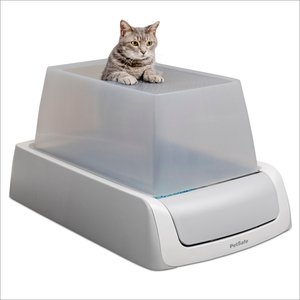
PetSafe ScoopFree Ultra Top-Entry Automatic Self-Cleaning Cat Litter Box, Gray
Design and Features:
The PetSafe ScoopFree Complete Plus boasts a sleek and modern design that fits seamlessly into any home environment. It features a spacious litter area that accommodates cats of all sizes comfortably. The litter box utilizes a disposable tray system, eliminating the need for constant refilling and cleaning. The disposable tray contains pre-portioned, premium-quality crystal litter that efficiently absorbs moisture and eliminates odors. The litter crystals are 99% dust-free, ensuring a clean and hygienic environment for both cats and their owners.
Self-Cleaning Mechanism:
One of the standout features of the ScoopFree Complete Plus is its automatic self-cleaning mechanism. After your cat uses the litter box, a sensor activates a countdown timer. This timer ensures that the waste is left undisturbed for a few minutes, giving the litter enough time to clump. Once the timer reaches zero, the raking system automatically sweeps the waste into a covered compartment, sealing away odor and mess. The process is quick, discreet, and remarkably efficient.
Odor Control:
The crystal litter used in the ScoopFree Complete Plus is specifically designed to absorb moisture and eliminate odors effectively. The crystals dehydrate solid waste, reducing bacterial growth and minimizing unpleasant smells. Additionally, the covered waste compartment prevents odors from escaping, ensuring a fresh and odor-free environment. Compared to traditional litter boxes, the PetSafe ScoopFree Complete Plus excels in its ability to keep even the most sensitive noses happy.
Maintenance and Convenience:
One of the major advantages of the ScoopFree Complete Plus is its low maintenance requirements. The disposable trays are designed to last up to 30 days for a single cat, reducing the need for constant litter box cleaning. When the tray is full, simply remove it and replace it with a fresh one. The litter box’s indicator light will alert you when it’s time for a tray change, making the entire process hassle-free. This convenience is a significant time-saver, particularly for busy cat owners who want to ensure their pets have a clean and sanitary environment.
Cat-Friendly Design:
The ScoopFree Complete Plus takes into consideration the preferences and needs of cats. The spacious litter area provides ample room for cats to move around comfortably. Additionally, the crystal litter is gentle on cats’ paws, making it ideal for cats with sensitive feet. The automatic cleaning mechanism is whisper-quiet, preventing any unnecessary noise that could startle or disturb your feline companion. The thoughtful design of this litter box prioritizes the well-being and comfort of your cat.
Creating a Cat-Friendly Home with Stylish and Functional Furniture
Cats are beloved members of our families, and their comfort and well-being should be a priority when designing our homes. Cat-friendly design furniture combines practicality and style, ensuring that both you and your feline companion can enjoy a harmonious living space. Let’s explore some key elements of cat-friendly design furniture and how they can enhance your home.
- Sturdy and Stable Construction:
Cat-friendly furniture should be sturdy and stable to withstand the energetic nature of our feline friends. Opt for pieces with robust materials and solid construction. Avoid flimsy or lightweight furniture that may topple over or get damaged easily. Stable cat towers, scratching posts, and shelves with secure brackets are excellent options to provide vertical spaces for your cat to climb and play.
- Scratch-Resistant Surfaces:
Cats have a natural instinct to scratch, which can lead to damage on furniture upholstery. Invest in scratch-resistant materials such as microfiber, leather, or tightly woven fabrics. These surfaces are less prone to scratching and are easier to clean. Alternatively, consider furniture with removable and washable covers for added convenience.
- Elevated Perching and Hiding Spots:
Cats love to perch and observe their surroundings from higher vantage points. Incorporate furniture with elevated platforms, shelves, or window perches to fulfill their natural desire for height. These spaces not only provide enrichment and entertainment for your cat but also minimize their need to climb on countertops or other off-limits areas.
- Multi-Functional Design:
Cat-friendly furniture can be both functional and aesthetically pleasing. Look for designs that serve dual purposes, such as cat litter box enclosures that double as stylish end tables or bookshelves with built-in cat-friendly nooks. This way, you can seamlessly integrate cat-related items into your home without compromising on style.
- Soft and Cozy Retreats:

Creating cozy retreats is essential to meet your cat’s need for comfort and relaxation. Provide soft and plush bedding, cat beds, or even dedicated window sill perches with comfortable cushions. These inviting spaces will entice your cat to curl up and enjoy their own cozy spot within the home. Designing a cat-friendly home doesn’t mean sacrificing style or functionality. By incorporating sturdy construction, scratch-resistant surfaces, elevated perching areas, multi-functional furniture, and cozy retreats, you can create a harmonious living environment for both you and your feline companion. Embracing cat-friendly design furniture ensures that your cat feels at ease and satisfied, while you can enjoy a stylish and comfortable home that caters to the needs of your beloved pet.
Conclusion:
The PetSafe ScoopFree Complete Plus Self-Cleaning Litter Box is a game-changer in feline waste management. Its innovative design, self-cleaning mechanism, and superior odor control make it a standout choice for cat owners seeking convenience and cleanliness. With its low maintenance requirements and cat-friendly features, this litter box offers both cats and their owners a stress-free and hygienic litter experience. If you’re looking to upgrade your litter box and provide your furry friend with the best possible environment, the ScoopFree Complete Plus is undoubtedly an excellent investment.
Learn how to make sure that your cat would go to the litter box check out
Decoding Cat Sleeping Body Language: What Do Their Positions Reveal?
Introduction: Cats are masters of relaxation, often spending a significant portion of their day snoozing away. However, their sleeping positions can tell us a lot about their comfort level, mood, and overall well-being. By understanding cat sleeping body language, you can develop a deeper bond with your feline companion. In this article, we’ll explore different cat sleeping positions and what they might signify.
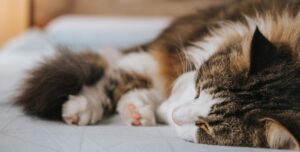
Cat Sleeping Body Language
- The Curled-Up Position: One of the most common sleeping positions for cats is the curled-up position. This is when a cat tucks their paws underneath their body and curls into a ball. This position is often seen when cats are seeking comfort and warmth. It helps them conserve body heat and protect their vital organs. When a cat sleeps in this position, it suggests they feel safe and secure in their environment.
- The Loaf Position: The loaf position is characterized by a cat sitting with all four paws neatly tucked under its body. In this position, the cat resembles a loaf of bread. This position is commonly observed when cats are in a state of relaxation but are still alert to their surroundings. It indicates that they are comfortable and content. Cats may assume the loaf position while napping or when they are not fully asleep but still want to rest.
- The Stretched Out Position: When a cat stretches out their body while sleeping, it signifies a high level of relaxation and trust. Cats may lie on their side or back, with their legs extended and sometimes slightly twitching. This position allows them to fully stretch their muscles and release any tension. Cats that sleep in the stretched-out position are generally comfortable in their environment and feel secure.
- The Belly-Up Position: The belly-up position is when a cat lies on their back, exposing their belly to the world. This position is a sign of complete trust and vulnerability. When cats sleep in this position, it suggests they feel safe and have a strong bond with their human companions. However, it’s important to note that not all cats enjoy having their bellies touched, so it’s best to observe their body language and respond accordingly.
- The “Bread Loaf” Position: Similar to the loaf position, the “bread loaf” position is when a cat tucks their paws underneath their body, but with their tail neatly wrapped around themselves. This position offers a balance between relaxation and readiness. It allows cats to quickly spring into action if needed, while still being comfortable enough to rest. Cats sleeping in this position are often in a state of light sleep.
Body language cat sleeping positions chart
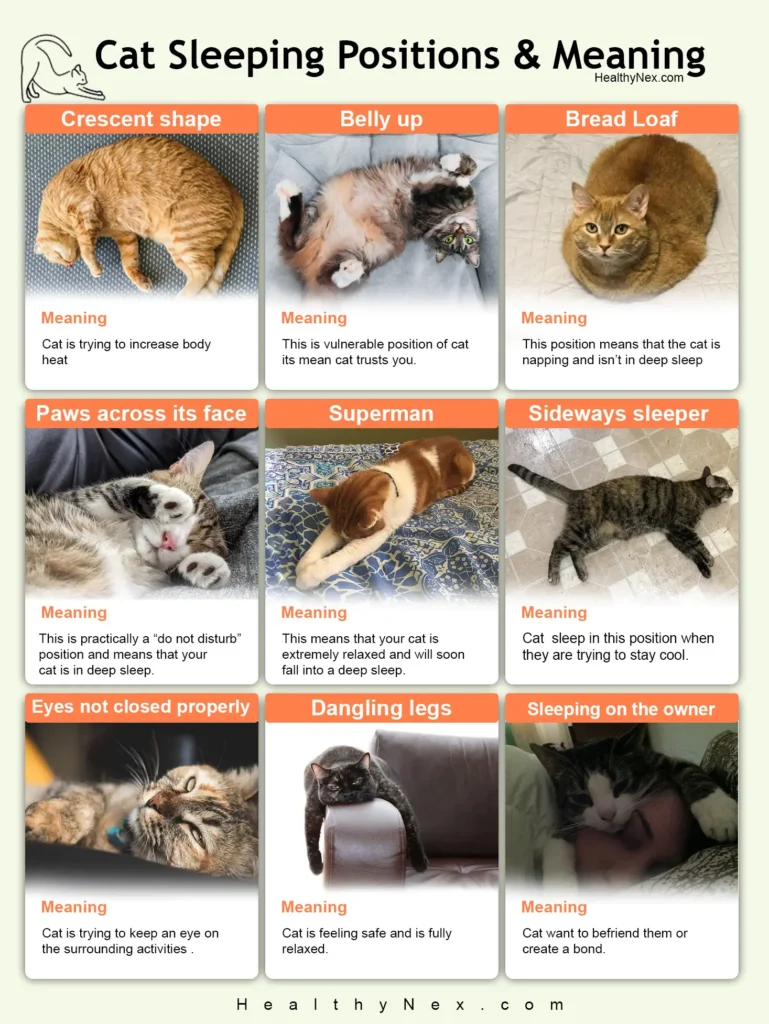
Learn more about sleeping position click here
Conclusion: Understanding cat sleeping body language can deepen our connection with our feline friends. Their sleeping positions reveal important insights into their comfort, relaxation, and trust levels. Whether they curl up, loaf, stretch out, show their belly, or assume the “bread loaf” position, each posture signifies a different emotional state. By paying attention to these subtle cues, we can better meet our cats’ needs and create a harmonious living environment for them.
Remember, cats are individuals, and their preferences may vary. While these sleeping positions offer general insights, it’s essential to consider your cat’s unique personality and behaviors. By observing and respecting their body language, you’ll strengthen the bond with your furry companion and provide them with the love and care they deserve.

Get Cat Language Bible
4 Good Maine Coon “Gentle Giant” characteristics
Maine Coon cats are known for their majestic appearance and charming personality. These large and long-haired felines are a popular breed among cat lovers, and for good reason. In this article, we’ll delve into the characteristics of a Maine Coon cat and explore why they make excellent pets.
Also known to be the “Gentle Giant” among cat breeds
One of the most distinctive features of a Maine Coon cat is its size. These cats are known for being one of the largest domestic cat breeds, with males weighing between 13-18 pounds on average and females weighing between 8-12 pounds. They have a long and sturdy body with well-developed muscles, making them a formidable presence. Their large size gives them a regal and majestic appearance that is often likened to a small lynx or bobcat.

Orange Maine Coon by Thirdman from Pexel
Maine Coon cats also have a distinctive coat that sets them apart. Their fur is long, dense, and waterproof, designed to withstand harsh weather conditions. They come in a variety of colors and patterns, including tabby, solid, and tortoiseshell, with their most common coat color being brown tabby. Their fluffy tail, known as a “bushy” tail, is one of their signature features, which they use for balance and warmth.
In terms of personality, Maine Coon cats are known for their friendly and outgoing nature. They are often described as gentle giants, as they are known to be affectionate and good-natured. They are highly social and enjoy spending time with their human companions, often following them around the house and seeking attention. They are also known to be excellent “lap cats,” enjoying snuggles and cuddles with their owners.
Maine Coon cats are also known for their intelligence and playfulness. They are curious and enjoy exploring their environment, often engaging in playful antics such as chasing toys or playing hide-and-seek. They are also known to be skilled hunters due to their natural instincts, and they may display playful stalking behavior. Many Maine Coon cats are known to play fetch and learn tricks, making them excellent companions for those who enjoy interactive play.
Another noteworthy characteristic of Maine Coon cats is their vocalization. They are known to be quite talkative and will often communicate with their owners through a variety of meows, chirps, and trills. This can make them excellent companions for those who enjoy conversing with their feline friends.
Maine Coon cats are also known for their loyalty and devotion to their human companions. They are known to form strong bonds with their owners and are often seen as affectionate and loyal pets. They are known to be good with children and other pets, making them a great addition to a family.
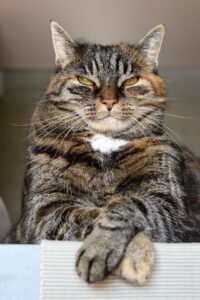
Senior maine-coon cat watching. Picture by Pixabay
In terms of grooming, Maine Coon cats require regular grooming due to their long coat. They should be brushed at least once a week to prevent matting and keep their fur healthy and tangle-free. They may also need periodic dental care, nail trimming, and ear cleaning to maintain their overall health and hygiene.
In conclusion, Maine Coon cats are a unique and special breed with their impressive size, luxurious coat, friendly personality, and intelligence. From their regal appearance and gentle nature to their playful demeanor and vocalization, Maine Coon cats make wonderful pets for those who are looking for a loyal and affectionate feline companion. If you’re considering adding a feline friend to your family, a Maine Coon cat could be a perfect choice!
Note I have a maine coon cat.

Get Cat Language Bible
6 Orange Cat Characteristics and why you should look at an Orange Cat
If you’re a cat lover, you may have come across an orange cat at some point. These felines are known for their striking appearance and unique personality. But what exactly sets them apart? In this article, we’ll delve into the characteristics of an orange cat and explore why they make great pets. Note also very popular cartoon cats are orange like Garfield and Heathcliff.
Orange cat personality (Orange Cat Characteristics)
One of the most distinctive features of an orange cat is, of course, its vibrant coat color. Ranging from a pale, creamy orange to a deep, fiery hue, their fur is eye-catching and instantly recognizable. This stunning coat is usually due to a genetic mutation that causes an increase in the production of a pigment called pheomelanin, which gives the fur its distinct orange color.
Orange cats also tend to have a stocky build with well-defined muscles, giving them a sturdy and athletic appearance. They usually have a round face with large, expressive eyes that come in various shades of yellow, amber, or green. Their noses and paw pads are often a complementary pink or black, adding to their overall charm. Read below why this most likely is.

Orange Maine Coon by Thirdman from Pexel
In terms of personality, orange cats are known for their outgoing and friendly nature. They are often described as affectionate, social, and highly interactive with their human companions. Many orange cats are known to be “lap cats,” enjoying snuggles and cuddles with their owners. They are also known to be confident and outgoing, often seeking attention and initiating playtime with their playful antics.
Orange cats are also known for their intelligence and adaptability. They are quick learners and are often curious about their surroundings, which makes them excellent explorers. They enjoy interactive toys and puzzles that challenge their minds, and they are also known to be skilled hunters due to their innate hunting instincts. With their intelligence and adaptability, orange cats are known to be great problem solvers and can easily adapt to different environments.
Another noteworthy characteristic of orange cats is their vocalization. They are known to be quite vocal and will often communicate with their owners through a variety of meows, chirps, and purrs. This can make them excellent companions for those who enjoy a chatty feline friend.
Additionally, orange cats are known for their loyalty and devotion to their human companions. They are known to form strong bonds with their owners and are often seen as loyal and loving companions. They are known to be good with children and other pets, making them a great addition to a family.
In terms of grooming, orange cats usually have short to medium-length fur that requires regular brushing to keep their coat healthy and free from matting. They may also need periodic dental care, nail trimming, and ear cleaning to maintain their overall health and hygiene. But this is mostly dependent on the cat breed obviously Maine-coons do not have short hair.
Also, to note that 80% of cats that are orange are male.
In conclusion, orange cats are unique and special felines with their striking appearance and distinct personality traits. From their vibrant coat color and stocky build to their outgoing nature and intelligence, orange cats make wonderful pets for those who are looking for an affectionate, loyal, and playful companion. If you’re considering adding a feline friend to your family, an orange cat could be a great choice!
This is why you should consider and orange cat but all color cats are great 🙂
Also to note my cat is orange so I testify these are very well put characteristics of orange cats.

Get Cat Language Bible
Training Your Cat: Tricks, Games, and More
Understanding Cat Behavior
Cats are known for their independent nature. They have a unique personality that makes them different from other pets. As cat owners, it’s essential to understand your feline friend’s behavior so you can provide the best care possible. Here are some common traits of cats:
Cats are territorial animals who mark their territory with urine or scratches.
They are also nocturnal creatures which means they tend to be more active at night than during the day.
Cats love to play and climb, so make sure to provide them with plenty of toys and surfaces to jump on.
Playtime and Games for Your Feline Friend
Playing with your cat is not only fun but also helps keep them healthy and happy. Here are some games you can play with your furry companion:
1. Paper balls – Tear up paper into small pieces and throw them around for your cat to chase.
2. Laser pointer – Point the laser pointer around the room and watch your cat follow it.
3. Scratching post – Provide your cat with a sturdy scratching post to prevent them from scratching furniture.
Keeping Your Cat Healthy and Happy
Providing proper nutrition and regular vet checkups are crucial in keeping your cat healthy and happy. Make sure to feed your cat a balanced diet consisting of high-quality protein sources such as fish, chicken, or turkey. Also, ensure that your cat has access to fresh water at all times. Regular visits to the veterinarian will help detect any potential health issues early on.
Teaching Your Cat Basic Tricks
Cats may seem aloof, but they can learn many tricks if trained properly. Here are some basic tricks you can teach your cat:
1. Sit – Hold a treat above your cat’s head while saying “Sit” until she sits down. Once she does, give her the treat. Repeat this process several times until she learns the trick.
2. High five – Place your hand outstretched with palm facing upwards. When your cat jumps onto your hand, say “High Five!” and reward her with a treat.
Communicating with Your Furry Companion
Just like humans, cats communicate through body language. Learning how to read your cat’s signals can help you better understand their needs and emotions. Some common signs include:
Ears back flat against the head – This indicates fear or aggression.
Arched back – A sign of happiness or excitement.
Whiskers twitching – Indicates sensitivity to sound or touch.
In conclusion, training your cat doesn’t need to be difficult. By understanding their behavior, providing playtime activities, maintaining good health habits, teaching simple tricks, and communicating effectively, you can create a strong bond with your furry companion.
Understanding Your Cat’s Behavior: A Guide for Pet Owners
As a cat owner, it is essential to understand your pet’s behavior in order to provide them with the best care and ensure their well-being. Cats are unique creatures that have specific needs and preferences which can be difficult to decipher at times. However, by understanding some of the common behaviors exhibited by cats, you can better meet those needs and create a happy and healthy environment for both yourself and your feline friend.
Providing Proper Care for Your Cat
The first step towards providing proper care for your cat is ensuring they receive all necessary vaccinations and regular checkups at the veterinary clinic. Additionally, cats require a balanced diet consisting of high-quality food and access to clean water. It is also important to keep your cat’s living space clean and free from hazards such as sharp objects or toxic substances. Regular grooming is another crucial aspect of caring for your cat, including brushing their fur, trimming their nails, and keeping their ears clean.
Maintaining Your Cat’s Health and Wellbeing
In addition to providing proper care, it is essential to maintain your cat’s overall health and wellbeing. This includes monitoring any changes in their behavior or physical appearance, as these could indicate an underlying issue. Common health problems associated with cats include dental issues, skin allergies, and urinary tract infections. By being aware of potential health risks and taking preventative measures, you can help ensure your cat lives a long and healthy life.
Training Your Cat to be a Well-Behaved Pet
While cats may not be known for their obedience like dogs, there are still ways to train them to behave properly within your home. One effective method is positive reinforcement training, where you reward your cat for good behavior using treats or toys. Another technique is to establish clear boundaries and rules regarding what is acceptable behavior within your household. Consistency is key when it comes to training your cat, so make sure to stick to a routine and enforce consequences if needed.
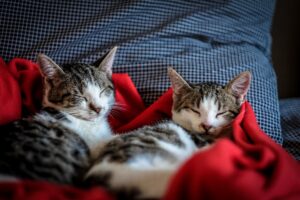
Photo by Francesco Ungaro from Pexels
Overall, understanding your cat’s behavior and providing them with proper care and training will go a long way in creating a harmonious relationship between you and your beloved feline companion.
Cat Care 101: Tips and Tricks to Keep Your Feline Happy and Healthy
Cats are one of the most popular pets in households around the world. They’re cute, fluffy, and often times playful creatures that bring joy into our lives. However, taking care of a cat requires effort and dedication. In this blog post, we will cover some essential tips and tricks for keeping your feline happy and healthy.
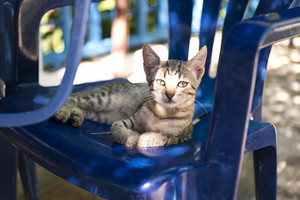
Introduction to Cat Care
Before you even consider getting a cat, it’s crucial to understand what is involved in caring for them properly. Cats require attention, food, water, shelter, and exercise on a daily basis. It’s also important to note that each breed has its own unique set of needs, so do your research before choosing a specific breed. Additionally, make sure to have all necessary supplies such as litter boxes, scratching posts, toys, and treats ready before bringing home your new furry friend.

Understanding Your Feline’s Behavior
Cats can be quite mysterious animals with their own unique behavior patterns. Understanding these behaviors is key to providing proper care and ensuring they remain happy and healthy. For example, if your cat spends an excessive amount of time grooming themselves or licking their paws, they may be experiencing skin irritations or allergies which could indicate a dietary issue. Similarly, if your cat suddenly stops using their litter box, there could be a medical reason behind it such as urinary tract issues. Paying close attention to your cat’s behavior can help identify potential problems early on.
Basic Cat Care Needs
As mentioned earlier, basic cat care includes feeding, watering, shelter, and exercise. Feeding your cat a balanced and nutritious diet is critical for maintaining good health. Make sure to provide fresh water daily and keep their bowl clean. Shelter refers to providing a safe and comfortable place for your cat to sleep and rest. This can include a cozy bed, blanket, or cat tower. Exercise is just as important for cats as it is for humans. Playtime with toys and interactive games can help prevent boredom and promote physical activity.
Keeping Your Cat Healthy and Happy
Regular veterinarian check-ups are essential for monitoring your cat’s overall health and identifying any potential issues early on. Vaccines, deworming medication, and flea/tick prevention should be administered according to your vet’s recommendations. Additionally, avoid overfeeding your cat and ensure they maintain a healthy weight through regular exercise and a balanced diet. Providing mental stimulation through puzzle toys and playtime can also improve your cat’s wellbeing.
Training Your Cat for Good Habits
Just like dogs, cats can be trained to perform certain tasks and develop good habits. Litter box training is perhaps the most common task when it comes to cats. Teaching your cat where to eliminate waste is essential for maintaining a clean and hygienic environment. Other tasks such as scratching at designated areas instead of furniture, coming when called, and walking on a leash can also be taught with consistent training and positive reinforcement.
Communicating with Your Cat Effectively
Cats are known for being independent creatures, but that doesn’t mean they don’t crave human interaction. Communicating effectively with your cat involves understanding their body language and responding accordingly. For example, if your cat is rubbing against you, they may be seeking affection and attention. On the other hand, if your cat hisses or swats at you, they may be feeling threatened or stressed. Learning how to read your cat’s body language and respond appropriately can strengthen the bond between you and your feline companion.
Socializing Your Cat for a Better Life
Socialization is essential for helping cats adapt to different environments and situations. Introducing your cat to new people, animals, and surroundings gradually can help reduce fear and anxiety. Additionally, playing socialization games such as hide-and-seek or fetch can encourage your cat to interact with their surroundings positively. Finally, providing plenty of love, attention, and playtime can enhance your cat’s quality of life and create a strong emotional connection between the two of you.
